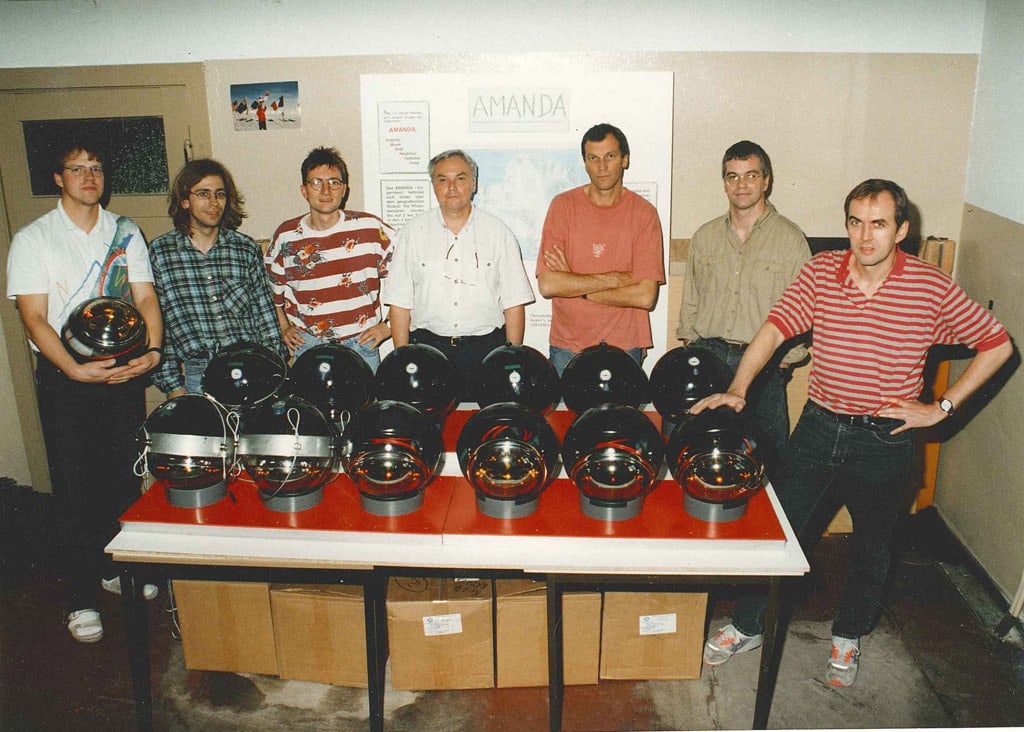AMANDA construction at the South Pole begins
The first phase of the AMANDA array, called AMANDA-A, was installed during the 1993-1994 austral summer. Holes were drilled using a hot-water drilling technique that had been developed by glaciologists. AMANDA-A consisted of four strings with 20 optical modules each, spaced 10 meters apart. The strings were deployed between depths of 800 and 1,000 meters. As it turned out, ice at 1,000-meter depths was too shallow for their purposes—there were too many air bubbles, which would prohibit the detector from seeing accurate signals from neutrino interactions.
In later construction campaigns (AMANDA-B4 in 1995-1996, AMANDA-B10 in 1996-1997, and AMANDA-II in 1998-2000), the AMANDA team deployed strings at depths of 1,500 meters and deeper in search of more transparent ice. The AMANDA Collaboration would conclude that ice is transparent below approximately 1,500 meters—information that was later used in the design of the IceCube Neutrino Observatory.
